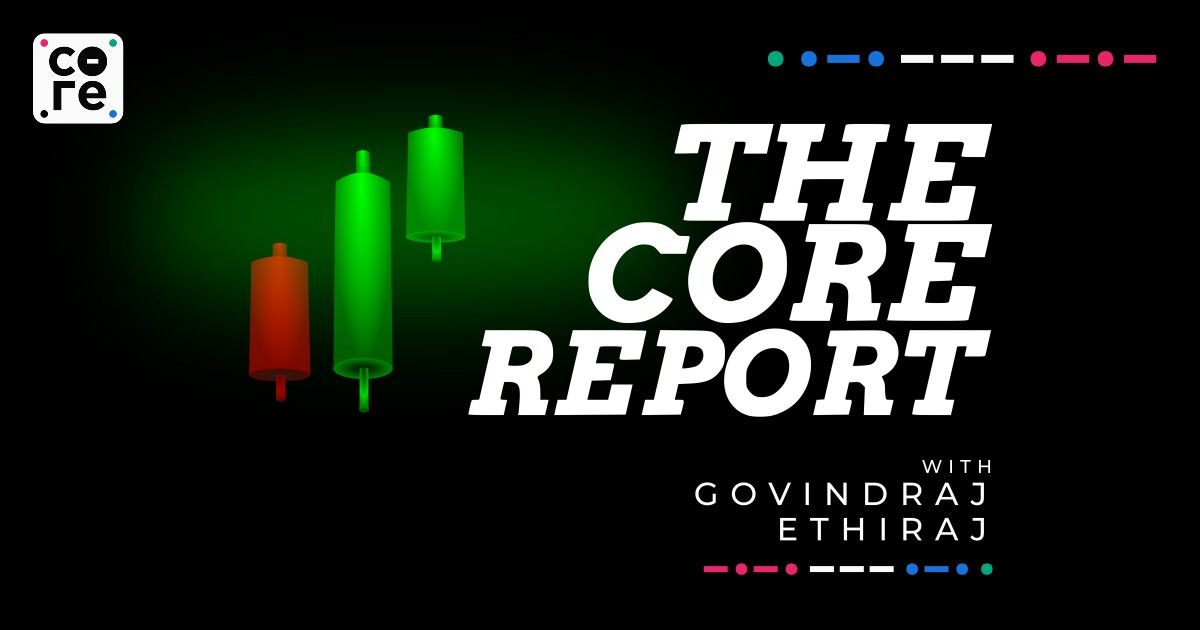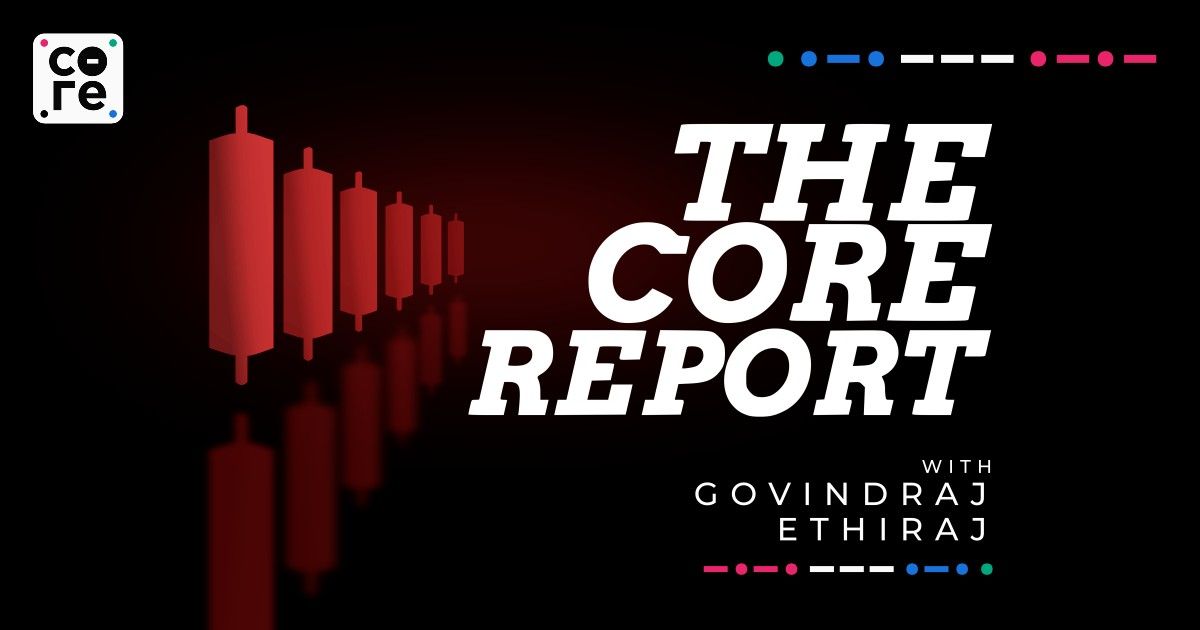On today’s episode, financial journalist Govindraj Ethiraj talks to Madhavi Arora, lead economist at Mumbai-based Emkay Global Financial Services as well as Pushan Sharma, Director at CRISIL Research.
Our Top Reports For Today
- (00:00) Stories Of The Day
- (00:50) Markets Are Weak In The Middle As They Grapple With Regulatory Overhang On Small Caps
- (03:25) Inflation Eases Off In February, Outlook Steady
- (10:53) The Interesting Contrast Between Vegetarian And Non Vegetarian Food
- (19:53) OPEC Sticks To Growth Forecast For Oil Demand
- (22:19) Car Sales Hit Record High In February
NOTE: This transcript contains only the host’s monologue and does not include any interviews or discussions that might be within the podcast. Please refer to the episode audio if you wish to quote the people interviewed. Email [email protected] for any queries.
—
The Markets Weak Under Scrutiny
The markets were steady, leaning on the positive side on Tuesday’s trade. The broader indices hid more than they revealed about the market as a whole and I will come to that in a moment.
The BSE Sensex touched a high of 74,004 before settling with a gain of 165 points at 73,668. The NSE Nifty ended just 3 points higher at 22,336.
So what was hidden.
Well, the BSE SME IPO index fell nearly 5 per cent a day after the Securities & Exchange Board of India said it had observed signs of manipulation at both the trading and issuance levels in the small and midsize enterprise (SME) space.
There is definitely more scrutiny in this space now, of buyers, sellers and the brokers in between.
Meanwhile markets were waiting for US inflation data that showed an increase of 0.4% for February and 3.2% over the year.
CNBC says this was in line with economists’ monthly forecast but higher than the 3.1% they expected for the annual figure, according to the Dow Jones consensus.
U.S. stock futures were higher as the open approached. Higher inflation means that interest rates could obviously stay high for longer.
Reuters earlier said that while investors anticipate at least three interest rate cuts by the Fed this year, most likely starting in June, a stronger-than-expected inflation print may shake market sentiment across the globe.
The Markets Are Weak In The Middle
Mid and small cap stocks and segments are seeing a fair bit of selling. The
BSE Midcap index fell 1.31 per cent while the Smallcap index fell 2.11 per cent.
The BSE SME IPO index extended Monday’s losses and fell more than 5% in trade today as we just mentioned.
The Mint paper says as many as 41 SME stocks witnessed a double-digit fall of up to 20%.
Some of them had just listed weeks ago, had received a good response for their IPOs and had listed at a premium.
SEBI has said that it may consider implementing disclosures as a starting step with respect to SME IPOs.
In the last one year, the BSE SME IPO index has more than doubled in value, outperforming the benchmark Sensex by a significant margin.
Inflation Eases Off
India’s consumer price based inflation has eased a little to 5.09 per cent in February. The rate had fallen to 5.1 per cent in January from 5.69 per cent in December 2023.
The recent numbers mean the target inflation continues to stay within the Reserve Bank of India (RBI) ‘s tolerance level of 2-6 per cent for six consecutive months.
Bank of Baroda Research said the 5.1% is exactly what they had forecast and most other forecasts were close.
“Inflation is purely a food inflation driven phenomenon which will continue to pressurise inflation in the coming months.
Vegetable inflation is the highest at 30.3% and with onion prices going up again, will continue to exhibit such tendencies,” a note from the bank said.
Like before, edible oils and fats have brought down inflation to an extent with negative growth of almost 19%.
All core inflation groups have witnessed low inflation of less than average.
On the other hand, many consumer product companies have announced increases in prices that could be reflected in inflation numbers ahead.
Overall, rural inflation is higher at 5.3% and urban at 4.8%. This is mainly due to the higher weight of food products in the index. Inflation also varies across states of India.
Separately, IIP growth for January came in at 3.8%
Mining and manufacturing did better at 5.9% and 5.6% compared with manufacturing at 3.2%.
8 of the 23 sectors had negative growth rates and included food, garments, paper, coke, chemicals, electronics and others.
The major boost came from the auto segment and furniture.
I reached out to Madhavi Arora, lead economist at Mumbai-based Emkay Global Financial Services and began by asking her what stood out in the latest numbers and finally, whether she was seeing any triangulation with other data points in the economy, including on consumption.
—
The Indian Face Off Between Veg & Non Veg Food
As we just discussed, vegetable inflation is now running at 30%. That is high by any standards and also something that cannot be controlled by steps like curtailing exports or other supply management moves.
Crisil Research puts out a monthly thali report where it looks at the food constituents of a classic indian meal.
In the latest version, it has said that the cost of the representative home-cooked veg thali rose 7% in February, while that of the non-veg thali declined 9%.
The cost of the veg thali in turn increased because of a 29% increase in prices of onions and 38% increase in tomato .
Prices of rice (accounting for 12% of the veg thali cost) and pulses (9%) also increased 14% and 20% on-year, respectively.
On the other hand, non-vegetarians have reason to feel good.
Prices of non veg thalis are down due to a 20% decline in year on year broiler prices, albeit on a higher base last year.
Over the last month, the cost of vegetarian thali decreased slightly and non-vegetarians also rose slightly because of a fall in prices of onion and potato.
As many of our economists keep telling us, including a little while ago, food prices can be highly volatile in India, both ways.
I reached out to Pushan Sharma, Director at Crisil Research and asked him to delve into the underlying constituents of price movements and also whether moves to control them were working.
—
Gold Slips Down
Gold prices which we have been talking about hitting record highs have now eased off too, after some nine sessions of gains.
Spot gold fell 0.5% to $2,171.59 per ounce as of 1207 GMT, trading below a record high of $2,194.99 it hit on Friday.
OPEC Sticks To Growth Forecast
The Organization of the Petroleum Exporting Countries (OPEC) has stuck to its forecast for relatively strong growth in global oil demand in 2024 and 2025, and further raised its economic growth forecast for this year amid falling inflation and anticipated rate cuts, Reuters and the WSJ reported.
The group raised its global economic-growth forecast for this year to 2.8% from 2.7% previously, supported by strong growth dynamics in China, India, and the U.S. The economic-growth forecast for next year was left unchanged at 2.9%.
OPEC’s 2024 demand growth forecast is far above that of many other forecasters including the International Energy Agency, Reuters said.
OPEC believes oil use will keep rising for the next two decades, while the IEA predicts it will peak by 2030 as the world shifts to cleaner energy.
OPEC of course reflects the statements and views of oil producing countries and their optimism obviously must be viewed in that context.
In the report, OPEC said a “robust dynamic” for economic growth towards the end of 2023 was expected to extend into the first half of 2024 and raised its 2024 economic growth forecast by 0.1 percentage points, following a hike last month.
“While some downside risks persist, a continuation of the expected momentum from the beginning of the year could result in additional upside potential for global economic growth in 2024.” OPEC said in the report.
“The 2024 and 2025 growth trajectories of India, China, as well as the United States, could exceed current expectations.”
India’s Oil Exports Avoid Red Sea
Most tankers carrying refined fuel from Reliance’s refining complex in Jamnagar in Gujarat are now sailing via the Cape of Good Hope to avoid the Red Sea, Reuters is reporting, quoting shipping sources and tracking data.
Reliance, in its chartering contracts, is offering tanker owners flexibility to go either way, shipping sources said, but added that most tanker owners are opting for the African route.
At least eight tankers since mid-February have taken the Cape of Good Hope route to supply jet fuel and diesel to Europe, LSEG data showed.
Previously all tankers carrying fuel from Reliance Industries passed through the Red Sea. Reliance’s two refineries at Jamnagar in western Gujarat State can process about 1.4 million barrels of oil per day.
Auto Sales At Manufacturers End Hit Record February
We earlier reported auto sales numbers from dealerships which come out a few days before the manufacturers. It’s all strong of course except that dealers are complaining of high inventories.
Not surprisingly, there is a slight difference between the two sets of numbers with the dealers federation reporting a 12% growth in sales of cars while the industry is reporting a roughly 11% increase in car sales, also the highest ever February domestic sales of 370,786 units.
Two-wheelers and three-wheelers also witnessed higher sales in February this year as compared to the last year. According to the data released, sales of two-wheelers were up 34.6 per cent at 1.52 million as compared to 1.12 million last year.
Siam’s data also revealed that exports of total passenger vehicles rose 20.4 per cent in February to 54,043 units as compared to 44,859 units last year.
Jet, Will It, Won’t It?
In a step that could finally lead to early resumption of flight operations at the grounded Jet Airways, the National Company Law Appellate Tribunal (NCLAT) on March 12 upheld the transfer of ownership of the grounded airline to Jalan Kalrock Consortium (JKC), Moneycontrol reported.
The National Company Law Tribunal (NCLT) had already permitted the transfer of ownership to JKC back in January last year.
The appellate tribunal further directed the lenders to effect the transfer in 90 days, while asking JKC to obtain an air operator’s certificate within this window.
Jet Airways was grounded in 2019 and State Bank of India (SBI), its largest lender, initiated insolvency proceedings against the company before NCLT Mumbai, and the company was subsequently admitted to the resolution process.





